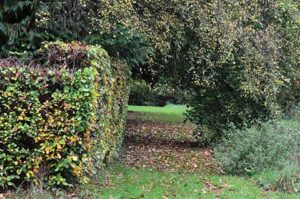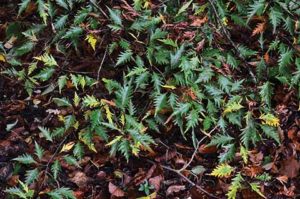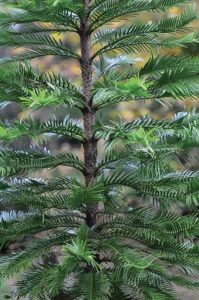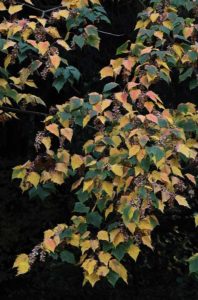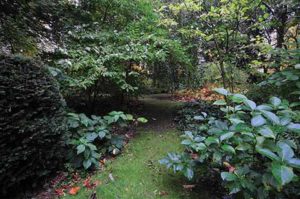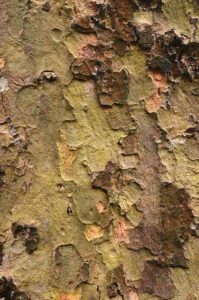Dorset Garden – Lawsbrook, Shillingstone
Susy and Colin Varndell explore a tree-lover’s paradise in early autumn
Published in September ’18
If you love trees, native or otherwise, this garden is not to be missed. The house and garden date back to the 1950s. It was developed by Ken and Kath Nelson from a field with one big tree in it. In 1959 they started to plant the garden and they are responsible for all the garden construction. It continues to be loved, cherished and gardened by their children, who obviously consider it a privilege to be able to do so. Indeed, Clive has lived here since his birth in the late 50s, although he has had periods away from the house and garden. Clive took on the garden after his parents died with the assistance of his sister, who is a professional gardener.
Their gardening philosophy seems to be to work with nature rather than trying to tame nature. If an experiment works, it stays; if it fails, that horticultural idea is binned and they move on to the next project. Deadwood is left for insects to use, no chemicals are used and it is definitely wildlife-friendly. Apparently it gets wilder and wilder as the years go by! The soil is greensand and slightly acid, with chalk on the nearby hills; it is very fertile.
The garden is in two sections: the original two-acre site followed in 1994 by a further four acres which mostly includes native British trees such as willows, alders and ash. The garden has nearly two hundred trees on the six-acre site. The tree collection is quite extensive with more than 130 different species. Some of the memorable trees include two dawn redwoods, which were planted in the mid-1960s, and a Swedish birch.
There is a herbaceous border, which was originally laid out in a sunny patch, but now it is gradually getting shadier thanks to the beautiful cedar and eucalyptus which are doing a grand job of creating a shady garden.
The beauty of the garden lies not only in its comprehensive tree collection but also in the paths, which can be followed and lead to interesting and exciting corners to explore. Getting lost seems quite easy even on such a small scale! You will certainly want to linger as you explore the paths, where the trunks of the trees beckon to be touched and admired. This tactile invitation extends from rough to smooth, hairy to bare, hard to soft. The trunks are all so different. The silvery, smooth bark of the weeping beech (Fagus sylvatica pendula), hard and impenetrable, stands strong and proud. The hairy, soft trunk of the coastal (Californian) redwood (Sequoia sempervirens) beckons to be touched and caressed, its longevity and stature something to be respected and wondered at.
The trunk of the symmetrical monkey puzzle tree (Araucaria araucana) clearly says ‘Keep away unless you want to be prickled!’ The great London plane trunk, gnarled, flaky and crusty, with its glorious tints, stands firm and confident. The Persian ironwood (Parrotia persica), with its multi-stemmed, attractive, flaking, chequered bark, is spectacular.
In autumn it is also the amazing variety of different coloured, sized and shaped leaves which is to be enjoyed. Leaves of varying shades of green, vibrant shades of yellow, orange, red and purple all vie for attention. The magnificent kaleidoscopic display is stunning.
Wellington boots may well be a necessity, but don’t let that put you off. Enjoy the autumn colours in this mini-arboretum. Dendrologists and amateurs alike will learn something and take away a most enjoyable experience with them. An added bonus is the very useful tree chart which is provided and which will help you to identify the various specimens.
